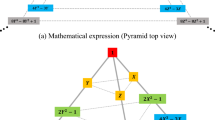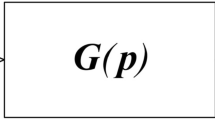Abstract
In this work, a nonlinear path-following method is given for analysing the nonlinearstability problems of space truss structures. The proposed method is based on the perturbationtechnique of stability theory and on the nonlinear modification of the classical linear homotopymethod. This higher order predictor-corrector method can compute the information ofdirect methods and is capable of computing not only points but also segments of the equilibriumpath. The segment approximation is the base of investigation of the singular points.The segment approximation is based on the generalized Roll theorem. Some numericalexamples showing different types of behavior are analysed and discussed.
Similar content being viewed by others
References
J.P. Abbott, An efficient algorithm for the determination of certain bifurcation points, J. Comput. Appl. Math. 4(1978)19 –27.
M.A. Criesfield, A fast incrementalyiterative solution procedure that handles “Snap-Through”, Comput. & Struc. 13(1981)55–62.
M.P. Kamat, L.T. Watson and V.B. Venkayya, A quasi-Newton versus a homotopy method for structural analysis, Comput. & Struc. 17(1983)579–585.
W.T. Koiter, Over de stabiliteit van het elastisch evenwicht, Dissertation, Delft Technical University, H.J. Paris, Amsterdam, Holland, 1945.
M. Kubicek, Dependence of solution of nonlinear systems on a parameter, Algorithm 502, CACM-Toms 2(1976)98–107.
E. Ramm, Strategies for tracing the non-linear response near limit points, Europe –US Workshop on Non-Linear Finite Element Analysis in Structural Mechanics, Ruhr University, Bochum, Germany, Springer, Berlin, 1981.
W.C. Rheinboldt, Numerical analysis of continuation methods for non-linear structural problems, Comput. & Struc. 13(1981)103–113.
E. Riks, The application of Newton's method to the problem of elastic stability, J. Appl. Mech. 39(1972)1060–1066.
K.H. Schweizerhoff and P. Wriggers, Consistent linearization for a path-following method in nonlinear FE analysis, Comp. Meth. Appl. Mech. Eng. 59(1986)261–279.
J.M.T. Thompson and G.W. Hunt, Elastic Instability Phenomena, Wiley, New York, 1984.
W. Wagner and P. Wriggers, A simple method for the calculation of post-critical branches, Engineering Computation 5(1988)103 –109.
P. Wriggers, W. Wagner and C. Miehe, A quadratically convergent procedure for the calculation of stability points in finite element analysis, Computer Meth. Appl. Mech. and Eng. 70(1988)329–347.
P. Wriggers and J.C. Simo, A general procedure for the direct computation of turning and bifurcation points, Int. J. Num. Meth. Eng. 30(1990)155–176.
P. Wriggers, Fundamentals of nonlinear response analysis of discretized systems, Advanced School on Nonlinear Stability of Structures, Udine, Italy, September 6-10, 1993.
Rights and permissions
About this article
Cite this article
Csébfalvi, A. A nonlinear path-following method for computingthe equilibrium curve of structures. Annals of Operations Research 81, 15–24 (1998). https://doi.org/10.1023/A:1018944804979
Issue Date:
DOI: https://doi.org/10.1023/A:1018944804979




